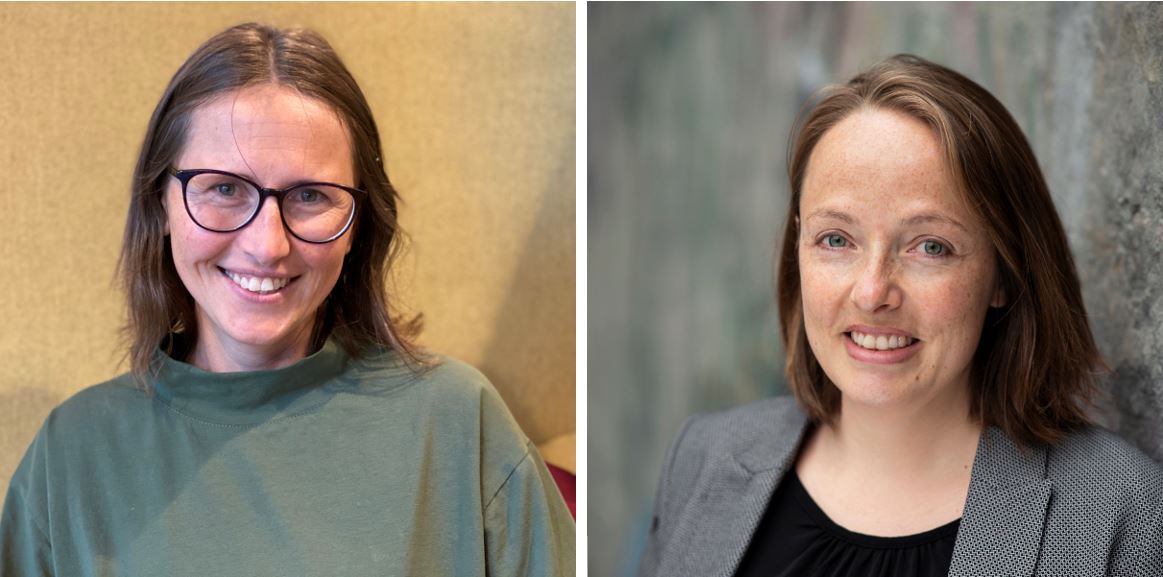We sat with Ida Tolgensbakk and Justyna Bell to discuss the long-awaited 19th Annual conference that will take place in Oslo from the 29th of June to the 1st of July. Ida is a cultural historian at NOVA, and together with Justyna, a sociologist also working at NOVA, they are amongst the coordinators of the Oslo hosting committee.
Could you tell us who are the organizations and people behind the Oslo Annual Conference?
Ida: Four IMISCOE members are located in Oslo. So, it made sense that we collaborated. We in OsloMet will provide for the venue for the conference but Fafo, ISF, and Prio are equal partners in the organization. This means that it's a bit of an organizational challenge sometimes, but it's also very good that we are many people.
After two years of online conferences, what is the format going to be in Oslo?
Ida: The idea is that it will be fully hybrid because in the planning process we could not know how the pandemic would treat us. There might be participants that cannot leave their countries because of borders closing, or those who cannot travel because of sickness. So we hope this format will enable the participation of as many people as possible. Hybridity means we will have rooms with equipment so that we can have a panel, or a session, where four participants are in a room together, and the ten others are online, and they will still be able to talk to each other. The equipment is there, and we are ready to go!
The theme of the conference is "Migration and time: temporalities of mobility, governance and resistance". What is the reasoning behind this theme?
Ida: There is an increased interest in temporal sides to migration. I don't think it's too far-fetched to say we are seeing some sort of temporal turn. This temporal turn in migration studies is also partly due to the fact that post-colonial migration to Europe has some history now. It's more than half a century since the first post-colonial migration started, like Turkish migration to Germany or Pakistani migration to Norway. We believe it is an appropriate time to reflect on that. And then, with the pandemic, you have the issue of waiting because everything kind of came to a halt.
We also want to get to know you as migration scholars. First of all, about IMISCOE. How did you find out about IMISCOE? And how did you first get involved with IMISCOE?
Ida: I'm quite new to IMISCOE. My first conference was, I think, in Malmö in 2019. I joined because I coordinated the network for migration researchers here at Nova.
Justyna: For me, my first conference was a Rotterdam in 2017. Around the time I joined OsloMet. I joined, and it was like a real "aha" moment because I finally felt like I was in the right place and could go from session to session: I felt like a child in the candy shop! Connecting with colleagues and the sessions I attended was quite interesting and exciting. So that's how I stuck with IMISCOE.
Returning to the Annual conference you are organizing, what do you hope people get out with out of those three days in Oslo?
Ida: That's a difficult question. I hope they will enjoy Oslo. It is the perfect time of year to be in Oslo, with very long days, very short nights. So, it's a beautiful town this time of year. From the conference professionally, I hope we can be part of the efforts to move IMISCOE into the future in the sense of the very important work with decolonizing migration studies, being more inclusive, being more diverse. We have taken that very seriously. So, I hope we can help IMISCOE in the right direction.
Justyna: I would add that in this intellectual sense, the keynotes and parallel sessions have been carefully designed also with this hope to go forward with IMISCOE. An exciting event that I think people will be pretty happy with. Also, meeting in person with colleagues that have been working online for a long time will be a great moment!
One last question from the new IMISCOE network office in Liège: do you have any tips for conference participants to enjoy their stay in Oslo? Anything unmissable?
Ida and Justyna: Oslo is a green and blue city, in the sense that it is characterized by being surrounded by forests and the fjord and cut through by rivers. We highly recommend a walk along the Akerselva river if you have time in your busy schedule. It is close to the venue to the east. Put "Kubaparken" in your Google Map, and there's a nice 15 minute-walk to the river from the venue, and you can walk downstream all the way to the city centre. If you do not have enough time for that, take a walk in the opposite direction to Slottsparken, the green area around our Royal Castle! For an evening stroll, swim or a dinner, nothing beats the new harbour area between the Munch Museum and the Akershus castle.

